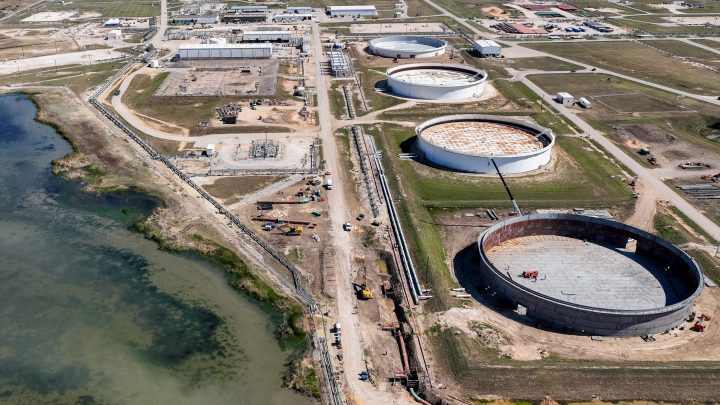
After a year of drawdowns, the Biden administration moves to replenish the Strategic Petroleum Reserve
After a year of drawdowns, the Biden administration moves to replenish the Strategic Petroleum Reserve

The U.S. Energy Department is gearing up to start replenishing the Strategic Petroleum Reserve after a record year of drawdowns. The SPR is the massive store of crude oil the government set aside in case an emergency limits supply, driving prices higher.
The Biden administration tapped it late last year as the world reopened following COVID shutdowns, causing demand — and therefore prices — to spike.
A few months later, the administration announced it would release a record amount of oil from the stockpile in response to Russia’s invasion of Ukraine.
There’s less oil in the SPR at the moment than at any point since 1984. Replenishing it now makes sense, said Clark Williams-Derry, an analyst with the Institute for Energy Economics and Financial Analysis.
“One of the big reasons that the Biden administration is filling up the SPR now is that prices are lower.”
A barrel of U.S. oil costs less than $80 today — down from $120 in June.
Williams-Derry said there’s a shift underway in how the government wants to use the reserve.
“The SPR is increasingly being used not just as an emergency measure, but also just kind of as a price-management tool,” he said.
There are 200 million fewer barrels in the reserve than a year ago, and the administration will start to replenish it with just 3 million barrels — which will serve as a test of sorts, according to Bob McNally, founder and president of Rapidan Energy Group.
The Department of Energy is trying out a new approach, locking in a price upfront as it buys back barrels, he said. That may provide support for oil prices and the industry.
By creating a floor under prices, McNally said, “they’re hoping U.S. oil drillers, oil executives, will say, ‘You know what? I’m feeling pretty confident that we’re not going to see the price collapse below $70.’”
Companies have until next week to submit bids to help restock the reserve at a target price of $67 to $72 per barrel.
There’s a lot happening in the world. Through it all, Marketplace is here for you.
You rely on Marketplace to break down the world’s events and tell you how it affects you in a fact-based, approachable way. We rely on your financial support to keep making that possible.
Your donation today powers the independent journalism that you rely on. For just $5/month, you can help sustain Marketplace so we can keep reporting on the things that matter to you.











